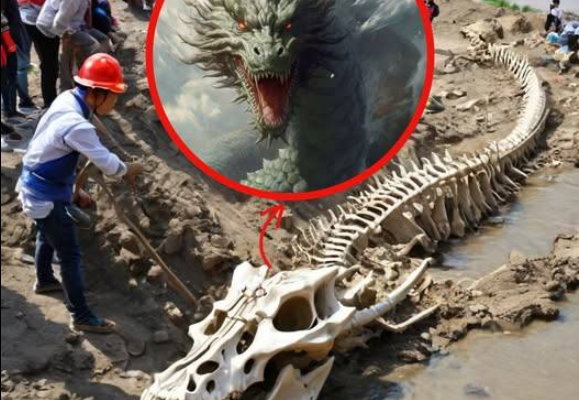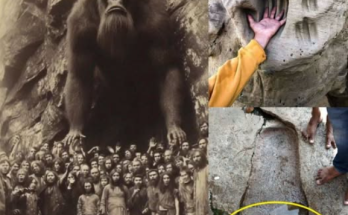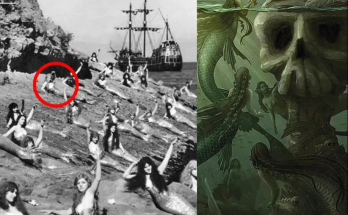🐉 Unbelievable Discovery in India!—Dragon Skeleton on Riverbank Sparks Global Debate

In the wake of devastating floods in India, nature has revealed a secret that has left scientists and storytellers stunned: a colossal dragon-like skeleton exposed along a riverbank. With elongated limbs, intricate skeletal structures, and what appear to be detailed wing bones, the discovery has ignited global speculation. Could this be proof that dragons—long relegated to myth and folklore—once roamed the Earth? Or is it a geological illusion, a hoax, or the misidentification of prehistoric remains?
The skeleton’s features are striking. Measuring several meters in length, its frame includes wing-like extensions and vertebrae that resemble no known terrestrial species. Unlike dinosaurs, whose fossils dominate prehistoric records, this find appears to blend traits of reptiles and avian creatures, eerily matching ancient descriptions of dragons. The sheer precision of the bones has captivated public imagination, suggesting more than coincidence.
Across India, legends of nagas (serpentine beings) and fire-breathing creatures have been passed down for millennia. In Hindu epics and Buddhist traditions, serpents and dragons occupy sacred space, representing both destruction and protection. For many, the riverbank skeleton feels like living proof that mythology may hold echoes of forgotten history. Were dragons more than symbolic beings? Did ancient peoples witness something that inspired tales preserved for thousands of years?

Scientists, however, urge caution. Extraordinary claims require extraordinary evidence. Without peer-reviewed excavation reports, verified dating, and laboratory analysis, the dragon skeleton remains a mystery. Specialists suggest that the remains could belong to a composite fossil, perhaps an arrangement of dinosaur bones, whale vertebrae, or large reptiles reassembled in a way that mimics legendary forms. Others point to the possibility of an artistic installation or hoax, crafted to spark fascination and blur the boundary between science and myth.
History provides many cautionary parallels. The 1977 Zuiyo-maru “plesiosaur” carcass off Japan later proved to be a decomposed basking shark. The Atacama “Ata” skeleton and Peru’s Nazca mummies were once touted as alien evidence before being debunked as human remains or fabrications. Viral images of “giant dragons” have repeatedly circulated online, often revealed as digitally manipulated. The Indian riverbank skeleton could belong to the same category—or it could mark a turning point in how we understand the origins of dragon myths.

Regardless of the outcome, the discovery has already captured global imagination. Social media platforms are flooded with images, theories, and debates, with hashtags like #DragonDiscovery and #AncientSecrets trending worldwide. For some, the skeleton is thrilling evidence that legends are rooted in truth; for others, it is a sobering reminder of how easily mystery can cloud scientific rigor.
Until DNA testing, carbon dating, and expert analysis are completed, the world waits. The dragon skeleton of India stands as both enigma and spectacle, a reminder that the line between folklore and fact is often as fluid as the rivers that conceal their secrets.
Was it truly a dragon, a lost species, or a carefully crafted illusion? For now, the Earth keeps its secret—and humanity watches in awe.
#DragonDiscovery #AncientSecrets #MythAndScience #IndiaMystery #LostWorld



